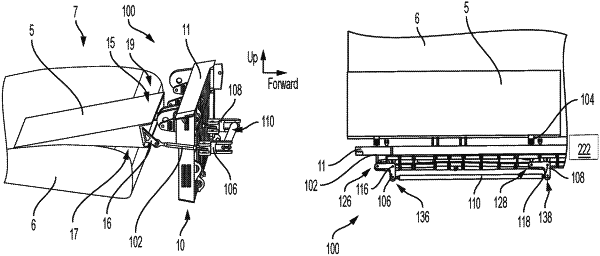| CPC B64C 13/30 (2013.01) [B64C 9/16 (2013.01)] | 14 Claims |

|
1. An actuation mechanism, comprising:
a control surface having a hinged end pivotally coupled to a wing structure including a spoiler beam;
a first arm and a second arm spaced apart from each other and each coupled to the control surface at the hinged end;
a first drive rod having a forward end and an aft end, the aft end coupled to the first arm and the forward end extending through an opening in the spoiler beam of the wing structure;
a second drive rod having a forward end and an aft end, the aft end coupled to the second arm and the forward end extending through an opening in the spoiler beam of the wing structure;
a first bell crank coupled via a first pivot pin to the wing structure at a first location that is forward of the spoiler beam of the wing structure, wherein a first end portion of the first bell crank is coupled to the forward end of the first drive rod;
a second bell crank coupled to the wing structure at a second location that is forward of the spoiler beam of the wing structure and spaced apart from the first location, wherein a first end portion of the second bell crank is coupled to the forward end of the second drive rod; and
a coupling rod extending along a longitudinal axis to a first distal end and a second distal end of the coupling rod and disposed at location that is forward of the spoiler beam of the wing structure, wherein the first distal end of the coupling rod is attached to a second end portion of the first bell crank and the second distal end of the coupling rod is attached to a second end portion of the second bell crank such that rotation of the first bell crank is synchronized with rotation of the second bell crank,
wherein the first and second bell cranks and the coupling rod are disposed forward of the spoiler beam of the wing structure, such that the actuation mechanism does not cause increased drag.
|